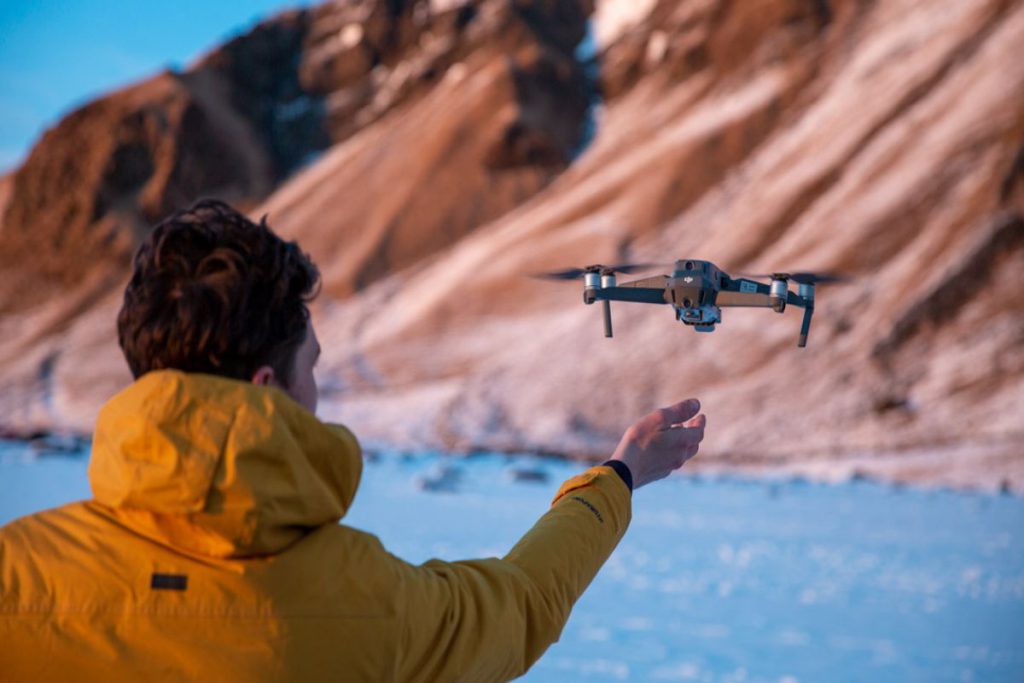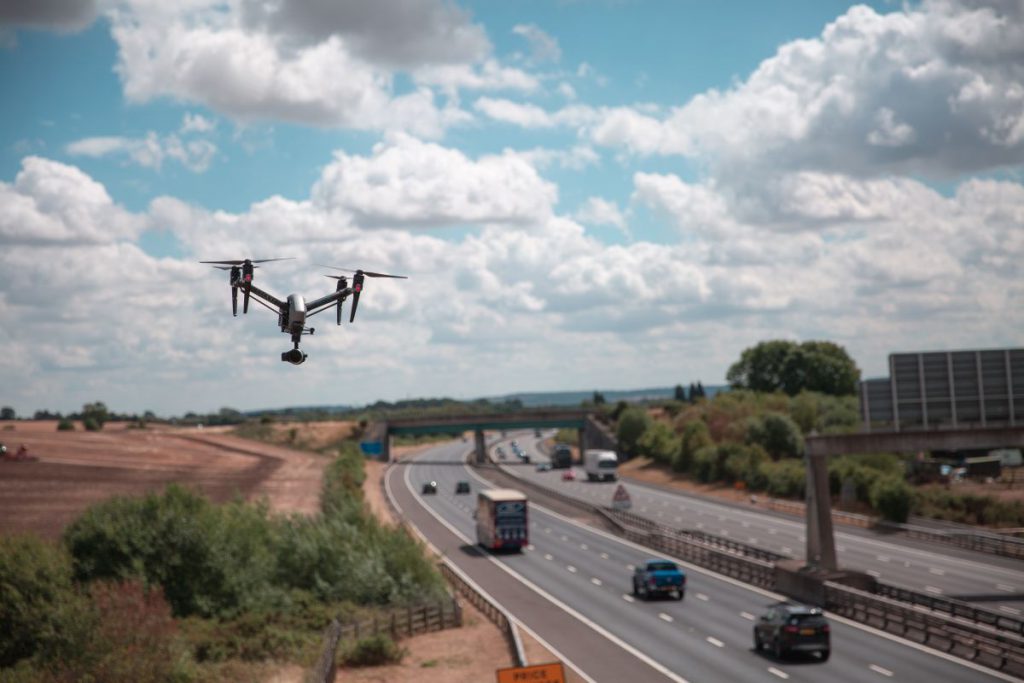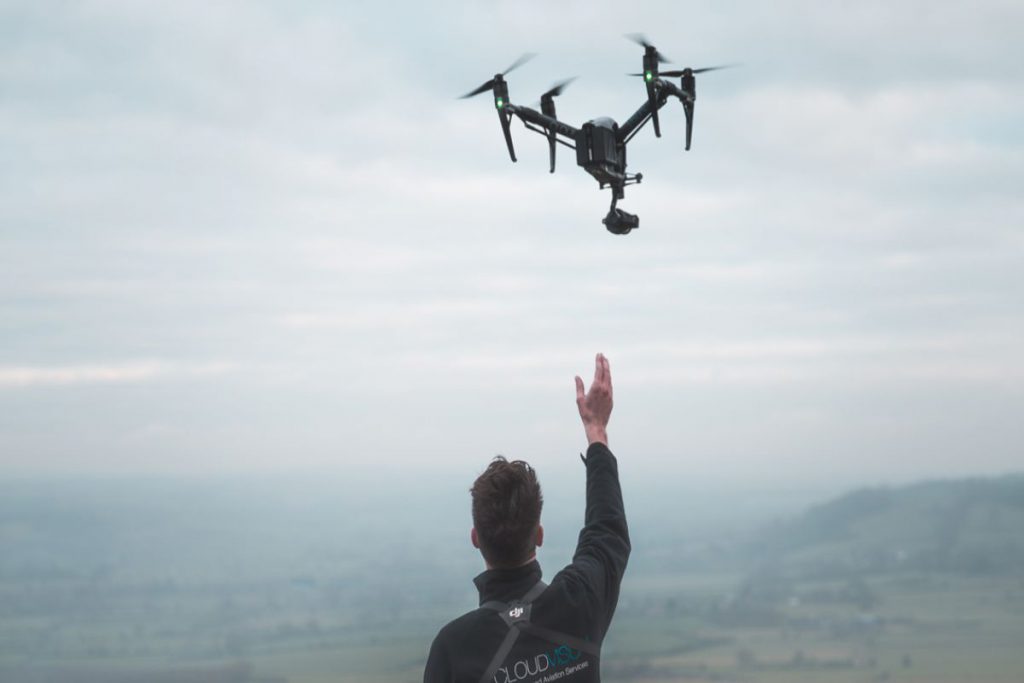For some people, the idea of drones might seem ominous, remote-controlled devices that are hard to detect and are easily fitted with cameras for nefarious spying. For others it’s a hobby used for photography, capturing extreme sports, art, and more.
As a society it is becoming a form of delivery and transport that may soon be vital as they do not use fossil fuels and can be remotely operated. In this article we will explore just some of the ways drones are impacting sectors of the UK, who are involved and where it might go.
We have all heard of drones and seen them advertised for hobbyists. It has since evolved into quite an artform itself with multiple annual contests, such as the Paris Aerial Photography Awards, open internationally and has a $10,000 award.
There are also countless videos and GIFs on the internet acquiring impressive drone footage for both matters of perspective but also to capture previously unobtainable angles of extreme sports such as surfing or skiing – footage that before would often require helicopters and far more money.

Images provided by Cloud Visuals TM
As a budding sector of technology, it is natural that the companies that produce them are a collection of tech startups. They are not simply ‘building’ drones though, in most cases drones are an amalgamation of different companies developing different components.
There is the hardware side focusing on the software and the aviation side focusing on the engineering. In fact, drones these days are being developed as an arm of robotics as their functions are ever-developing beyond simply flying and capturing footage.
It is no surprise that drones have started to evolve this way in the public sector seeing as they have military beginnings – as a short aside it should be noted that the most advanced drones on the planet are still military grade with one of the newest surveillance models being pocket size!
Drones today are already used for a surprising number of things, big and small. Many industries are using them for land surveys as well as wedding photography, filming locations, and other such things typically done through manual efforts. There have even been recent cases of drone usage for delivering medical supplies, most notably in the UK to solve the issues coronavirus has caused.

Images provided by Cloud Visuals TM
As we speak some of the largest companies are using drone technology including Land Rover who developed a new ‘discovery’ vehicle in 2018 – a state-of-the-art communication 4X4 that comes with an eight rotor drone, currently used in the Red Cross to find stranded people in hard to reach places using a drone and thermal imaging cameras.
However, the fact that this technology is finding its way into the public sector, shaping the methods of entire industries it begs the question of how it might be regulated. In 2019 there was a major event where an anonymous person managed to ground all flights at Gatwick airport simply by repeatedly flying a drone into their airspace. While this is a major example there are many more minor yet similar incidents all over the world of drones invading airspace and complaints of privacy invasions.
Nonetheless, their uses cannot be denied and while some may find them a nuisance, they are undeniably progressing the way we do things and it seems they are here to stay. In fact, most leading engineers would say that if any publically used flight transport were to become as regular as cars it would be based on drone tech.
To get an idea of how the drone industry is shaping in the UK we asked Will Halford, Director of Photography at one of the UK’s leading companies, Cloud Visuals, a company that specialises in drone services.

Images provided by Cloud Visuals TM
Which industries in the UK do you find your drones and services are in most demand?
An industry we didn’t anticipate being our most popular is filming for the UK highways network. We film and photograph all aspects of the highway’s infrastructure, from quarrying the raw materials to safety and instructional videos. The demand is driven by the rapid innovation of technology and requirement to find new talent to join the industry, which has historically been very difficult.
Are there increasing challenges in drone regulation in terms of airspace or is it relaxing?
Drone regulation has always posed challenges, but the UK Civil Aviation Authority (CAA) has been working closely with industry bodies to ensure that new rules being brought out do not stifle those who want to carry out commercial work. Compared to some other countries, the UK is very lucky to have a firm yet sensible set of rules which protects the public and allows hobbyists to continue to enjoy their pastime.
What are some of the most notable recent advances in drone technology?
Onboard drone technology has advanced so quickly in the last couple of years to a point that even small consumer grade drones, such as the DJI Mavic series are essentially flying computers, able to intelligently fly, avoid obstacles and process data on the fly.
Are you aware of drones being used for delivery services, such as recent deliveries of medical supplies?
Yes, in the UK I’ve watched several trials of drone delivery services. During lockdown, a team successfully worked on delivering supplies to the Isle of Wight on the South Coast of England, flying a drone Beyond the Visual Line of Sight (BVLOS) over The Solent. Another team worked in the Highlands of Scotland helping to deliver emergency supplies to remote islands. Without the support and trust from the CAA, this wouldn’t have been possible.
What are some things to expect from the drone industry in the next five years?
Over the next few years, we are going to see a lot more pressure from worldwide government on companies such as DJI to enhance their remote identification. Integrating drone flights into air traffic control, it will serve to protect lives in the air and bring justice to people who illegally fly their drones in restricted airspace or close to airports.
Drones are certainly things that are shaping the way we structure transport in the future, while there are many challenges as to how they can be safely and properly implemented into society that seems to be something that is set to be overcome. In the end they are versatile and sustainable modes of transport even if for now they are best implemented for aerial photography, surveying and delivery usage.